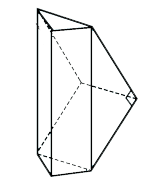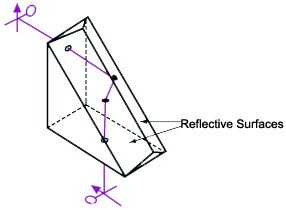|
Engineers gave the roof prism its name because of a roof-like structure that allows the prism to invert an image in two meridians: left-right and up-down. It is also known as an Amici prism. A roof prism can appear to have a rather complex geometry, but it is simply a modified right-angle prism in which the "roof" replaces the hypotenuse. In its typical orientation, the roof prism receives an input beam through one leg and reflects the output beam through the other leg. |
 |
||
|
Roof prisms are suitable for applications that demand both right-angle deflection and image erection (a combination left-to-right angle deflection and top-to-bottom inversion, equivalent to a 180 degree rotation about the optical axis). These are normally uncoated for use in TIR mode. Protected aluminum or internal silver coatings may be specified for roof surfaces when used in wide field applications beyond TIR limits. |
|||
The beam experiences only two reflections in the roof, but each reflection is a compound reflection because each section of the roof is tilted in both the original plane of incidence and its orthogonal plane. The double compound reflection reverts the image, or inverts the image in two orthogonal meridians: up-down and left-right. The final image is said to be a reverted copy of the input.
A roof prism will introduce aberrations into an image if the beams of light that form the image converge or diverge as they pass through the prism. Image-forming elements that complete the system must be designed to compensate for these aberrations. If the beams at the prism are collimated, then no special compensation is required. |
|||
Roof Prisms


